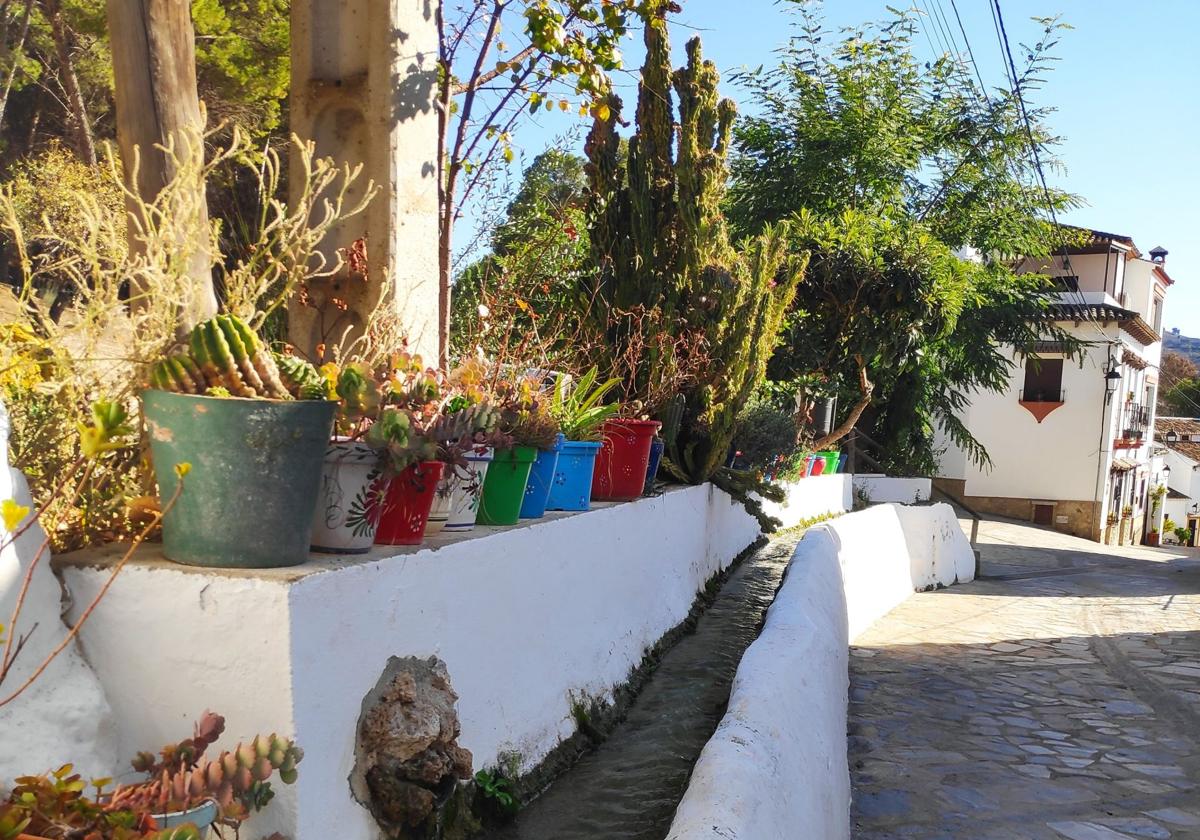Village walks where running water is a constant presence and background sound
The murmur of water flowing through the streets in specially-constructed channels in these two villages in Malaga that, while located some distance from each other, are united by how many fountains and springs they have in so many corners
They are united by a similar soundtrack. Strolling through their streets on a calm day brings the same reward. The murmur of water flowing by is constant, thanks to the irrigation channels that form part of their respective urban layouts. Between Istán and Montecorto there are some 90 kilometres of winding roads. They are not in the same location, nor do they have historical links with each other, but what they do have in common is the presence of irrigation channels in their most central streets.
Water thus becomes the essential element for understanding the idiosyncrasy of both villages located in Malaga province. Each can be found in important, protected areas of natural and national parks: Istán in the Sierra de las Nieves and Montecorto in the Sierra de Grazalema.
Both villages invite you to take a stroll through them and let yourself be carried away by the urban layouts that reveal centuries of history. In the case of Montecorto, the common thread around water is the Acequía Benito (the village's irrigation channel). The trail can thus begin at the Doce Pilares, a plentiful spring located in the highest part of this village. Montecorto managed to emancipate itself from the town of Ronda to become Malaga's 102nd municipality just over a decade ago.
The waters flow down through the Lavadero Viejo and the Lavadero Nuevo (two public wash-houses). They then continue their course through La Fábrica, located in El Llano, until they reach an area of fertile and splendid fields with orchards (the Molino, Perico, Abajo and Andrés). Remember that the ultimate purpose of this 'acequía', like other irrigation channels, has always been to facilitate the irrigation of small-scale, seasonal crops cultivated on such land.
Water-spouts, springs and publi wash-houses are part of these water systems that were essential until a few decades ago
The surplus water from these fields and orchards then flows into the stream that bears the name of this village in the Serranía de Ronda. The water cycle takes on another dimension here. Generations of Montecorteños who have had this soundtrack to their lives growing up know this. Even today it is still the main attraction in the village centre, although it should not be forgotten that Montecorto is especially well-known for its mountainous surroundings and for its particular location in the Serranía de Ronda as it is situated between the Roman city of Acinipo and El Gastor reservoir, now in the province of Cadiz, with which it shares a large part of its borders.
The soft murmur of running water is also the most important element in Istán. Here the almost musical journey of the village's water begins in El Chorro, an iconic place within the village for centuries. Here there is an ethnographic complex of old-style village life, consisting of the old public laundry and a fountain with seven spouts (it once had eight).
From there, the water flows into the irrigation channels, many of which are now partially underground. You can follow them to explore the village streets in a rather different way - no need for a visitor map.
The route takes on the sense of a trail beside fountains and springs that show the wealth of water in these mountains in the southern part of the Sierra de las Nieves. At every step you will see a fountain or sense an irrigation channel beneath the ground you walk on. Water thus vindicates its importance. The presence of water can also be appreciated from the viewpoints. Thanks to its elevated position, this village in the Sierra de las Nieves has several balconies. From them you can see the waterfalls of the Verde river or some of its tributaries.
It is worth going a little further away from the centre of the irrigation channels to go to the Tajo Banderas, which is located at one end of the village where, in previous centuries, the heraldic standards of those who fought to take the village were placed. From there, you can see all the mountain ranges that surround the place, the course of the Río Verde and its mouth as it pours into the reservoir of La Concepción.
A few metres from there, on a hill, is the viewpoint of Las Herrizas, where the Verde river valley can be seen more clearly.
Within the village there are also other natural balconies to discover along this curious trail, such as that of the Azufaifo, from where you can see the source of the Molinos river, which can also be reached by taking another walk from the village itself.

